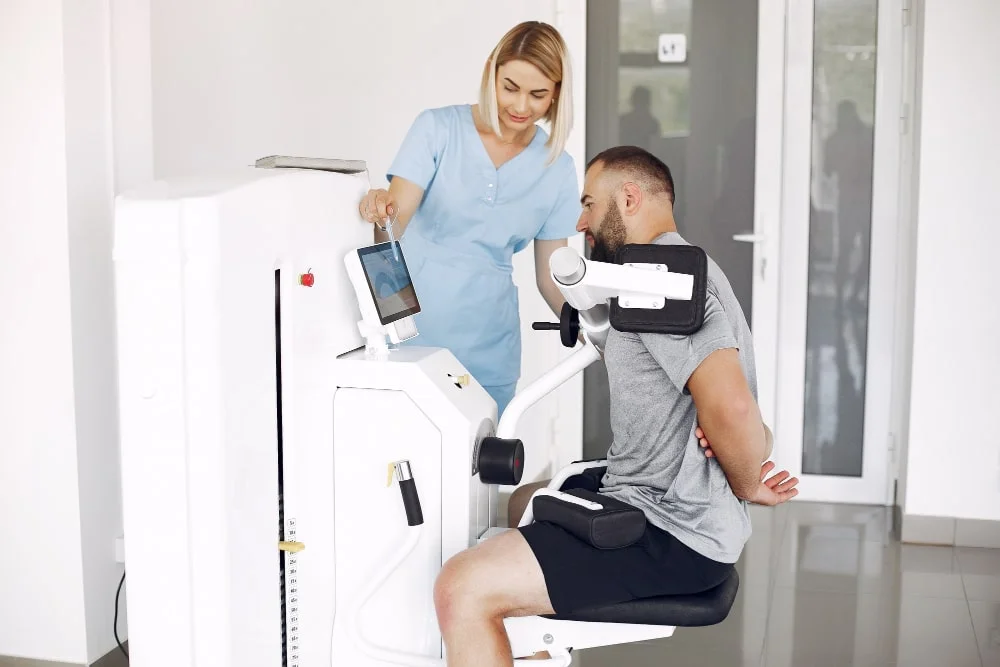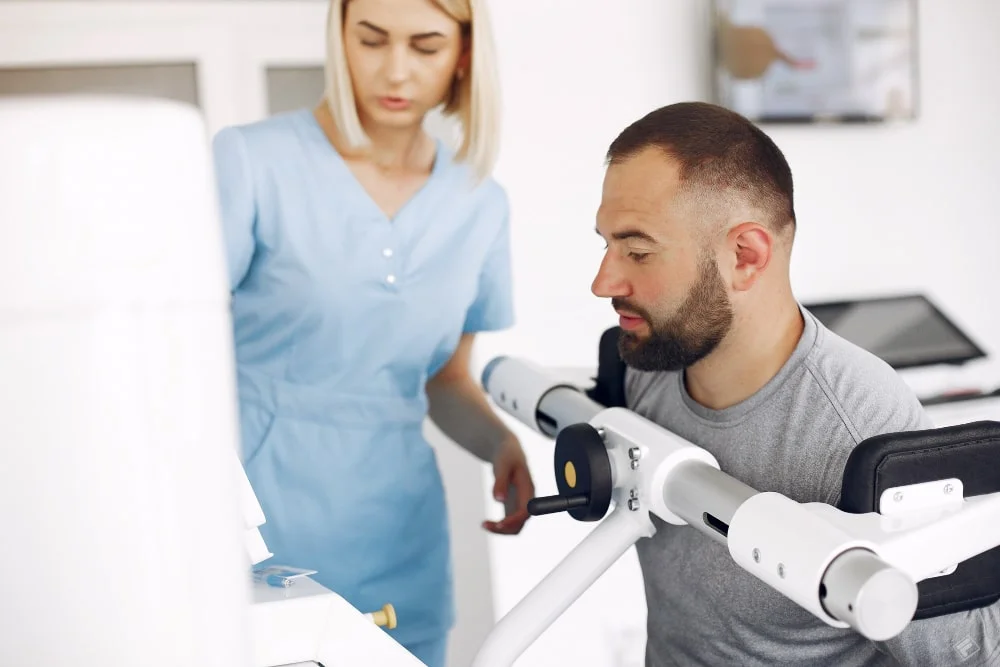
The Use of Magnetic Field Therapy in Physical Medicine and Rehabilitation
- The Use of Magnetic Field Therapy in Physical Medicine and Rehabilitation
- What is Magnetic Field Therapy?
- Magnetic Field Technology
- Cellular Therapy Through Magnetic Resonance
- The Healing Form of MRI: The Power of Resonance Frequencies
- Effect at the Proton Level
- Tissue-Specific Frequency Application
- Our Areas of Application
- Conclusion and Evaluation
Thanks to the opportunities provided by technological advancements in physical therapy and rehabilitation practices, we can now target not only symptoms but also cellular-level healing processes. At this point, magnetic field therapies stand out due to their non-invasive nature, high patient comfort, and ability to directly stimulate cellular repair.
In our clinical practice, we implement magnetic field therapy using devices from various generations, providing significant therapeutic contributions in a wide range of musculoskeletal disorders.
What is Magnetic Field Therapy?
Magnetic field therapy is based on the application of low-frequency electromagnetic waves to the body. These waves regulate biological processes by affecting ion movements at the cellular level. Our primary goals include reducing inflammation, supporting cell regeneration, alleviating pain, and improving circulation.
Magnetic Field Technology
Recently developed devices have made the clinical use of magnetic field therapy both safe and effective. With these systems, the depth and intensity of the magnetic field applied to the body can be precisely adjusted according to the type of disease. These new technologies are frequently used in the treatment of conditions such as osteoarthritis, lumbar disc herniation, shoulder pathologies, and musculoskeletal injuries, and their effectiveness is supported by scientific studies.
Cellular Therapy Through Magnetic Resonance
Unlike classical electromagnetic field applications, magnetic resonance principles are also being used therapeutically. This system, which can be described as the therapeutic form of MRI technology used in medical imaging, influences cellular metabolism through low-energy resonance frequencies. In this way, regenerative processes in targeted tissues are supported, intracellular communication is accelerated, and energy production is enhanced.
This treatment method yields successful outcomes, particularly in degenerative conditions such as osteoarthritis, spinal degeneration, sports injuries, and meniscal lesions. Patients complete the therapy in a completely comfortable environment without experiencing any pain or discomfort.

The Healing Form of MRI: The Power of Resonance Frequencies
Although the magnetic resonance (MR) principle is generally used for diagnostic purposes, its adaptation to therapy has led to significant effects such as increasing cell membrane permeability, accelerating ATP production, and activating DNA repair mechanisms. Thanks to this technology, tissues’ self-healing capacity is stimulated, and chronic inflammatory processes can be alleviated naturally.
Effect at the Proton Level
The mechanism of action of magnetic field therapies operates not only at a macroscopic level but also at the subatomic level. The resonance frequencies used target protons in the cell nucleus, contributing to their alignment and reorganization processes. This effect plays a vital role in regulating cellular communication and energy transfer. This interaction at the proton level is one of the key elements that explain the biophysical efficacy of the therapy.
Tissue-Specific Frequency Application
Another important aspect of magnetic field therapies is the ability to apply frequencies specific to the disease and tissue type. Since each tissue has its own unique electromagnetic resonance response, different frequencies must be applied to bone tissue and muscle tissue, for instance. This precision allows us to target treatments specifically, significantly enhancing their effectiveness. By using tissue-specific resonance frequencies in areas such as cartilage, tendons, nerves, and ligaments, we can achieve maximum biological response.
Our Areas of Application
Based on our clinical experience and patient feedback, we effectively utilize magnetic field therapy in the following areas:
- Osteoarthritis (knee, hip, wrist)
- Lumbar and cervical disc herniations
- Shoulder impingement syndrome and rotator cuff lesions
- Tennis and golfer’s elbow
- Plantar fasciitis
- Meniscal and ligament injuries
- Muscle spasms and soft tissue lesions
- Treatment of chronic edema and lymphedema
Conclusion and Evaluation
Magnetic field therapies have become a significant part of the holistic and cell-based approach of modern physical therapy. Newly developed electromagnetic systems and resonance-based devices allow us to offer patients safe, effective, and painless treatment options. The fact that these applications support natural healing through a drug-free and non-invasive method indicates that they will play a much greater role in the future of physical therapy.
As physical therapy specialists, we believe in the importance of developing targeted treatments based on the underlying causes of diseases and supporting this process with innovative technologies. Magnetic field therapies are a strong reflection of this vision.
Asst. Prof. Dr. Elif Berber
Specialist in Physical Medicine and Rehabilitation





